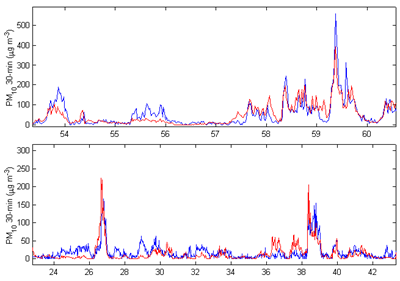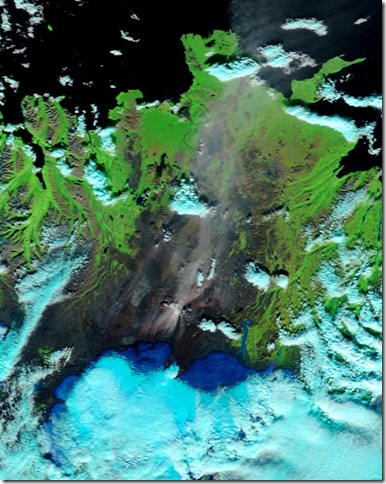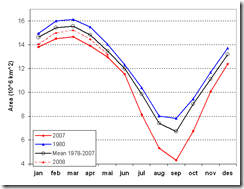A recent power-plant in Hellisheidi, 25 km ESE of Reykjavik, has caused the level of H2S pollution to rise considerably. There is also a similar plant at Nesjavellir. On the official web of UST there is a nice example of how the level has changed:
http://www.ust.is/Mengunarvarnir/Loftgaedi/Brennisteinsvetni/
It should be pointed out right away that the level of pollution is well below the official health limits for 24 hours of pollution, which are 150 micro-grams per cubic meter, in Reykjavik.
Some have though tried to convince people that the power-plant is not responsible for the increased pollution. That the level is not detectable in Reykjavik.
Below I show very simple calculations how the pollution from a point-source spreads in a slow 2 m/s wind.
This figure shows the resulting level of pollution, in micro-grams per cubic meter, for a simple point-source, without wet deposition (or dry), for constant wind direction and speed. Reykjavik would be at x = 25 km.
It is obvious that for the level of pollution in Reykjavik to be 50 - 100 micro-grams per cubic meter, that the pollution is considerably stronger as we get closer. Here the stack height is at 30 m.
This figure shows the measured H2S concentration on December 10th, 2008 at Grensas. The maximum is about 70 micro-grams per cubic meter. Wind-speed from morning till 14 was about 2 m/s and the wind direction was close to easterly.




